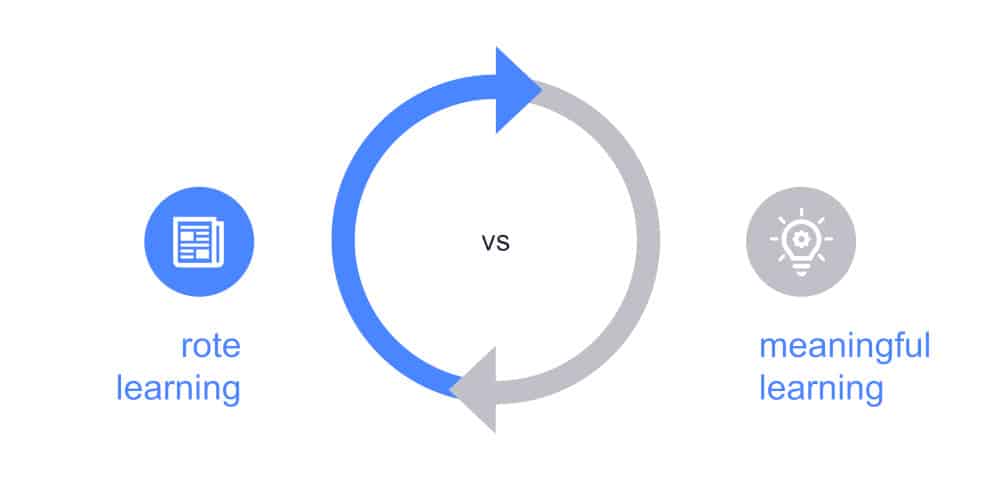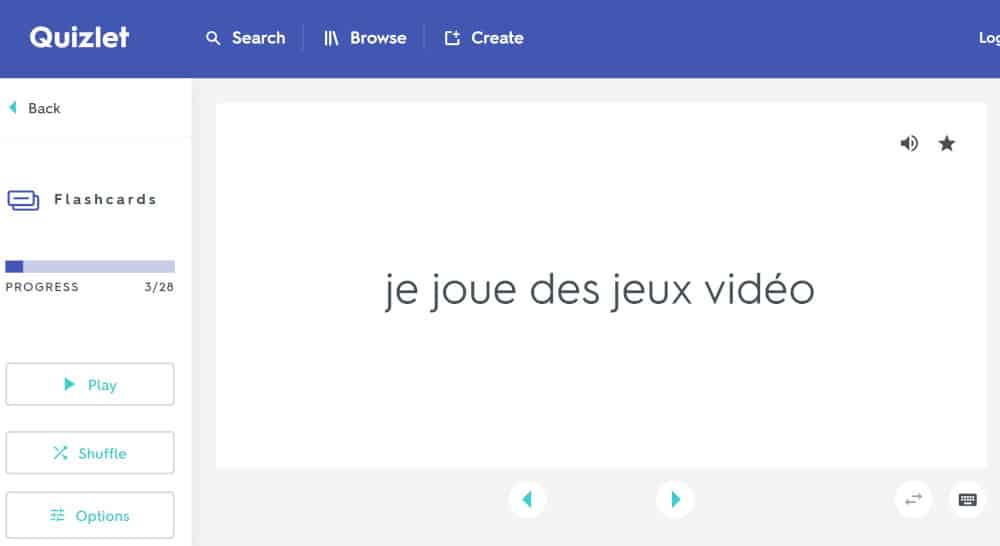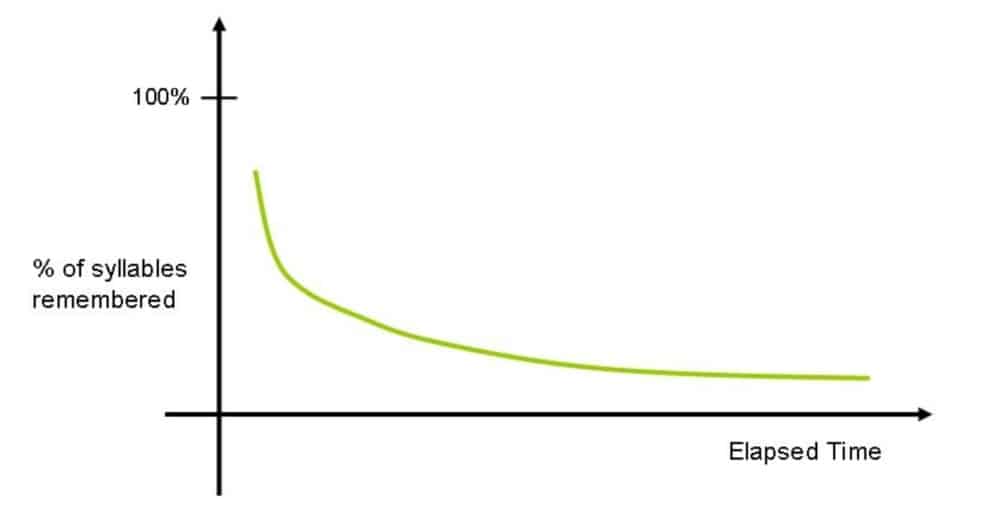Our content is reader supported, which means when you buy from links you click on, we may earn a commission.
The Role of Rote Repetition in eLearning

Rote learning has a terrible reputation.
It’s often used as a scapegoat to explain why certain methods of teaching don’t produce good results, and as an example of everything that was wrong with the pedagogy of decades past.
Mechanical repetition is seen as the favored weapon of teachers whose only goal is to make sure their students pass the test, with no regard for whether they can apply that information in a practical setting.
Some of the criticisms made against the use of rote memorization are valid, but its critics often miss the big picture.
In fact, rote learning is one of the fundamental building blocks of a functional curriculum. We use it every day, for remembering everything from phone numbers to our grocery lists.
For teachers working online, where the strategies you have access to are limited, it’s important to understand your options.
Rote learning is a handy tool to have at your disposal. We’ll teach you the basic facts so you can leverage them to create the ideal curriculum.
What is Rote Repetition?
Rote learning is the memorization of information through repetition. Despite its reputation, it’s one of the fundamental ways that human beings process information. In some cases, it’s the only way to learn at all.
Here are some examples of rote learning.
Think about the English language.
Because our alphabet is composed of completely arbitrary letters, with no pictographic significance and no direct connection between their shape and their sounds, the only way to learn what they mean is by seeing them used over and over again.

Once a person has mastered the alphabet, they can begin to sound out words. However, without hearing those words spoken in context, they won’t know their meaning.
Once a person has mastered words, they can see similarities between them, and decode their meaning that way.
Learning a completely new word will always require a certain amount of repetition before it enters long-term memory. The same is true of numbers, and the basic concepts of mathematics.
Rote learning is often contrasted with meaningful learning, which Richard E. Mayer defines as:
“Learning [that] occurs when students build the knowledge and cognitive processes needed for successful problem-solving.”
In other words, meaningful learning is essential for critical thinking. The distinction between the two is something of a false dichotomy. That’s because rote learning is a prerequisite for meaningful learning.
Meaningful learning happens when a piece of information fits into a framework that the student understands. But that framework must be built from information that’s acquired through repetition.
Rote Learning vs Meaningful Learning
The primary issue with rote memory is that it doesn’t provide a student with a complete understanding of the information. Without forming connections between memorized information and their preexisting understanding of a topic, the student won’t be able to make use of what they’ve learned.
It follows that both rote learning and meaningful learning are essential parts of the learning process. So, if you’re going to use both types of learning anyway, when should each one come into play?

Rote learning has the major advantage of being quick. It takes effort to memorize something, especially if that thing is long or complicated, but it doesn’t take much time.
If you want to make your students proficient with the basic concepts of a topic quickly, then rote learning is a good place to start. Later, that foundation is reinforced by tying the concepts to meaningful ideas.
Meaningful learning deals much more effectively with difficult and abstract concepts, and it can give students the tools they need to generate new ideas and manipulate those that they have already acquired.
In higher levels of education, where students enter a class or program already knowing the basics of that topic, meaningful learning should be your focus.
Rote memorization methods have been used for centuries as an effective way to move concepts from short-term memory into long-term memory.
It’s what allows somebody to recite a poem they learned twenty years prior. If that person relied on memorization alone, though, they won’t remember what the poem means.
If you pair rote learning with meaningful learning, then when the poem moves to long-term memory, it will bring its context and significance with it. That’s the best outcome.
When Does Learning by Rote Repetition Make the Most Sense?
Use rote repetition whenever your students don’t have enough knowledge to connect new information, or when the meaning of something is completely arbitrary.
For an example of the first type of situation, think about a student learning a foreign language. Once they know a few words, they will be able to start seeing how they connect. But to begin with, they need to quickly commit some vocabulary to memory.
An example of the second situation is a high-school student in chemistry class learning the periodic table. Element names often have nothing to do with their atomic weight or their properties. Rote memorization is the only way to learn those things.
How Do Other Learning Strategies Relate to Rote Learning?
Nowadays, memorizing information can be more fun than just reciting it or writing it down over and over again.
In online environments, which already make use of digital infrastructure, instructors can use quizzes and memory games to make rote learning more engaging. Services like Quizlet and Duolingo make use of this strategy.

You should also consider using microlearning in online training to make repetition easier for students. To do that, give them small, focused pieces of information to memorize. For learners taking advantage of mobile eLearning, this strategy is especially useful on the go where they have short bursts of time.
You can get your students to memorize content with maximum efficiency by opting for spaced repetition. This involves repetition after progressively longer intervals of time. Every time a student is close to forgetting the information, it snaps back into place until it transfers into long-term memory.
How to Incorporate Rote Learning into Your Online Course or Training Program
Online environments don’t have the benefits of face-to-face learning.
These benefits include the ability to seamlessly ask questions or have impromptu discussions. Therefore, it can be difficult to keep learners engaged for long periods of time. This makes it the perfect environment for microlearning. Instructors can use short videos or bite-sized lectures to give students space to process the information.
You can use spaced repetition by creating scheduled quizzes, based around the Ebbinghaus Forgetting Curve.

The curve basically shows that a learner will only retain a certain percentage of the testing material (like syllables, etc …) after time goes on. Using spaced repetition, the learner can review the material every few days.
That way, students work on the information covered in the lectures at just the right intervals. This allows them to retain material for much longer.
Of course, you shouldn’t overuse rote learning. You don’t want to produce rote learners who can’t put the information they have learned to use.
In online environments, question and answer sessions using web conferencing software like Zoom help students make connections between the things they’ve learned.
Frequently Asked Questions on Rote Repetition
Is spaced repetition rote learning?
Spaced repetition is a method for memorizing information. The idea behind spaced repetition is that when you study something, you should review the same information multiple times at spaced-out intervals. This helps you remember the information better.
What is rote memory in psychology?
Rote memory generally involves remembering things without any emotional attachment or contextual understanding. The major practice in this type of memorization is learning through repetition or routine, without paying close attention to what is being remembered.
What is rote repetition?
Rote repetition is a term used to describe the storing of information in long-term memory through sheer repetition. Although rote memorization seems to be an important step in learning some subjects, it’s often criticized. That’s because you may not actually understand a particular concept if you only memorize it.
Does rote repetition help long-term memory?
Rote repetition can help with your long-term memory. That’s because it stimulates the brain to create new connections between neurons. This process is called neuroplasticity, and allows us to can change our brains through learning. The more you practice something, the easier it becomes for you to remember it later.
What does rote mean?
The word rote means “to repeat something mechanically.” The word comes from the Latin ‘rota’ which means wheel.
Is learning by rote good?
Learning by rote is important for memorizing facts and figures, but it doesn’t help you learn how to think critically about things. Instead, it’s important to also try to understand why something works, what makes it work, and what could be improved. It’s important to be able to apply those concepts to similar situations later on.
What are examples of rote learning?
Examples of rote learning include memorizing vocabulary words, repeating math formulas, or practicing for exams. This method of learning works well for some students, but others find it boring and ineffective.
What are rote memorization techniques?
Rote memorization techniques are used to help students learn information quickly. The technique can work by breaking down complex subjects into smaller chunks, which makes them easier for the brain to process. This helps students retain information better, and also allows them to focus on learning new concepts rather than trying to remember everything they learned previously.
Time to Put it to Use!
Now that you’ve had an introduction to some of the rote learning strategies you can deploy in your teaching, you can build the best curriculum possible.
Microlearning and spaced repetition can do wonders for student engagement and information retention in eLearning, so don’t be late to adopt them.
Before you go, though, you might want to read through just one more time, to make sure you remember everything!